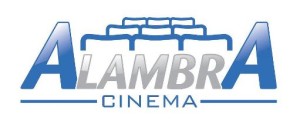Cryptocurrencies have emerged as a new asset class that has gained significant popularity and adoption in recent years. With the rise of Bitcoin and other alternative coins, investors have been looking for ways to diversify their portfolios and take advantage of this new digital asset.
One popular investment strategy that has gained traction in the cryptocurrency space is the Core-Satellite approach. This approach involves dividing an investment portfolio into two parts: a core portfolio and a satellite portfolio. The core portfolio consists of more stable and established cryptocurrencies, while the satellite portfolio consists of more speculative and high-risk coins.
The core-satellite approach is based on the principle of diversification, which aims to spread risk across different assets to reduce the impact of any single investment on the overall portfolio. By dividing investments into core and satellite components, investors can take advantage of both the stability of established cryptocurrencies and the potential high returns of emerging coins.
In the core segment of the portfolio, investors typically hold a diversified mix of large-cap cryptocurrencies such as Bitcoin, Ethereum Stable Index Profit, and Litecoin. These coins are considered to have a lower risk profile compared to smaller, less established coins. The core portfolio acts as a stable foundation for the overall investment strategy, providing a level of security and reliability.
On the other hand, the satellite segment of the portfolio consists of smaller-cap coins with higher growth potential but also higher volatility. These coins may include newly launched projects or coins with niche use cases. While these investments carry a higher level of risk, they also present an opportunity for significant returns for investors willing to take on more risk.
One of the key benefits of the core-satellite approach is the ability to tailor the portfolio to suit individual risk tolerance and investment goals. By adjusting the allocation between core and satellite components, investors can manage their exposure to different risk levels and potential rewards. This flexibility allows investors to take advantage of the dynamic and rapidly evolving cryptocurrency market.
Another advantage of the core-satellite approach is the ability to capture different market trends and opportunities. By holding a mix of stable and emerging cryptocurrencies, investors can diversify their exposure to different sectors and technologies within the crypto space. This diversification can help mitigate the risks associated with investing in a single coin or sector.
It is important to note that the core-satellite approach is not a one-size-fits-all solution and should be tailored to each individual investor’s risk tolerance, investment goals, and time horizon. Investors should carefully research and analyze the coins included in both the core and satellite segments of their portfolios to ensure they align with their investment objectives.
In conclusion, the core-satellite approach offers a flexible and diversified investment strategy for navigating the complex and volatile cryptocurrency market. By combining stable, established coins with more speculative and high-growth coins, investors can potentially achieve a balanced risk-return profile and capitalize on the opportunities presented by the evolving digital asset landscape.

